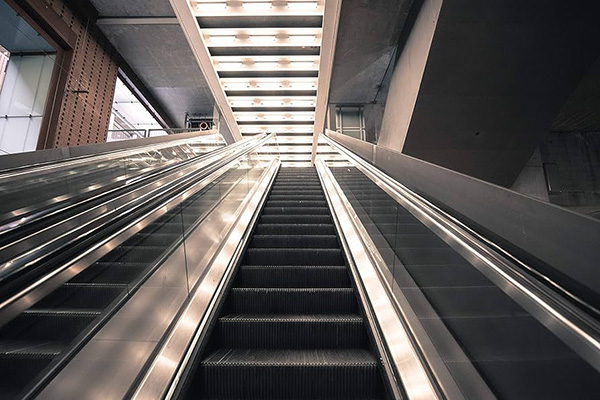To those in the intellectual property system, the escalator is famous for its association with “trademark genericization.” Genericization occurs when trademarks become so well-known that they no longer identify the source of goods or services in the minds of consumers and instead become names for the goods themselves. “Escalator” stands right alongside “aspirin,” “cellophane,” and “cat litter” as examples of a brand that has become its own product. And it’s true that the escalator’s intellectual property story hinges in part on how Charles Seeberger’s escalator brand grew to become a symbol of the thing itself. But the bigger story is about a cultural phenomenon, an invention that transformed the way we interact with the world. The way people move. The way we sell. The way we construct the built world.
Before the escalator, commerce and transportation were largely one-dimensional. Stairs and elevators were for the committed and purposeful, their limitations limiting vertical expansion, above and below the ground. Stairs require patience and effort. Elevators have a unique, precise, and strictly limited mission. The invention of the escalator changed everything: suddenly, a steady stream of people could ascend into the air or descend into the depths of the earth. The escalator itself transformed architecture, creating a fluid transition between up and down. Now, in commerce and transportation, neither the sky nor the earth will be the limit.
Being revolutionary has become commonplace, and escalators are now simply part of the cultural glow of modern life. Movies are full of escalator scenes, from “American Werewolf in London” to “Rain Man” and the parody of the “Rain Man” escalator scene in “The Hangover.” Perhaps the movie “Elf” best sums up our relationship with escalators. In that film, Will Farrell plays a human raised by elves who travels to New York City to find his biological father. An alien to modern technology, he has no idea how to step onto a department store escalator, and after several failed attempts that disrupt the flow of traffic and annoy those around him, he steps onto it with one foot, holding onto the railing with his hands. His front foot rises while the rest of his body drags along. The scene is reminiscent of the strange wonder of the escalator, something we now take for granted. It could be a scene from Buster Keaton, or it could be taken from a 1910 Boston Sunday Globe comic strip titled “The Man Who Forgot to Walk on Both Feet.” The scene is funny precisely because it evokes both the wonder and the vulgarity of the escalator.
We take the escalator for granted, partly because it was made possible; we now all live in the world of the escalator, without any longer understanding its radical nature. The escalator may be the most important invention in shopping, but its impact goes beyond commerce. It has conquered space itself.






